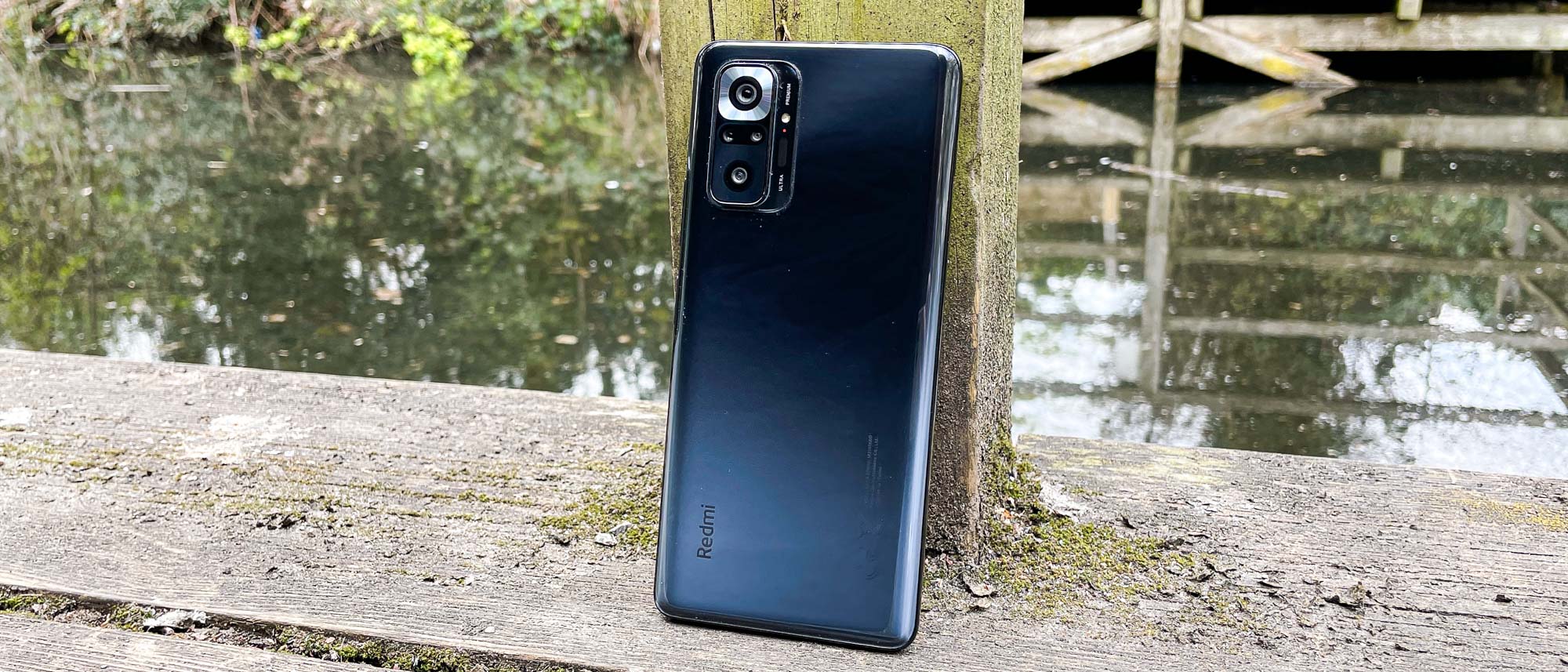Tom's Guide Verdict
The Redmi Note 10 Pro offers everything from quad rear cameras to a display with a high refresh rate in a $250 package. Unfortunately, U.S. users can’t buy this phone, so the Google Pixel 4a remains a better option.
Pros
- +
Large 120Hz display
- +
Effective array of cameras
- +
Speedy charging
Cons
- -
Lackluster performance
- -
No U.S. availability
Why you can trust Tom's Guide
Starting price: £249
Display: 6.67-inch AMOLED FHD (2400 x 1080)
Refresh rate: 60Hz/120Hz
Rear cameras: 108MP main (f/1.9), 8MP ultrawide (f/2.2), 5MP telemacro (f/2.4), 2MP depth (f/2.4)
Front camera: 16MP (f/2.45)
Chipset: Snapdragon 732G
RAM: 6GB/8GB
Storage: 64GB/128GB with microSD slot
Battery: 5,020 mAh
Charging: 33W wired
Operating system: Android 11 with MIUI 12
Size: 6.45 x 3.01 x 0.32 inches (164 x 76.5 x 8.1 mm)
Weight: 6.8 ounces (193g)
Water/dust resistance: IP53
Bargain hunters shouldn’t overlook the Redmi Note 10 Pro. Although the model name makes this device like an off-brand Samsung handset, this budget-priced phablet offers some of the most desirable features on a smartphone while managing to undercut major rivals such as the OnePlus Nord N10 5G or the Google Pixel 4a.
The Redmi Note 10 Pro features excellent specs across the board, from its 120Hz display to its 108MP main camera. The only real exception is the phone’s chipset, which lacks the oomph missing from similarly priced budget handsets.
U.S. shoppers won’t be able to enjoy the Redmi Note 10 Pro’s stellar value. But in parts of the world where this phone is available, the Redmi Note 10 Pro vaults to the top of the best cheap phones list.
Redmi Note 10 Pro review: Price and release date
If you’re in the U.K., you can buy the Redmi Note 10 Pro right now for £249. That only gets you the basic model with 6GB of RAM and 64GB of storage. If you want 6GB/128GB instead, that’s £269.
In the U.S., there’s no way to buy the Note 10 Pro, owing to the government’s ongoing dispute with Redmi’s parent company Xiaomi. Nothing is stopping you from importing this phone, but for this price, you’re better off picking a phone that is already available in American stores such as the OnePlus Nord N10 5G.
Redmi Note 10 Pro review: Design
“What a weird mix of textures.” That was the first thing I thought when I saw the Note 10 Pro. The color of the glass back doesn’t quite work with the metal sides, which is made even worse by the different color and texture of the top and bottom edges of the phone. Add to that the stepped camera block with metal surround, and Redmi’s phone feels too busy for my taste.

For colors, you can choose Glacier Blue, Gradient Bronze and Onyx Grey (the color of my review unit). The bronze is my favorite option, both because it’s a good-looking hue that’s unusual among smartphones; it’s also got a matte texture. The Gray looks nice out of the box, but its glossy back proves to be a nightmare when it comes to picking up fingerprints.

At least the Note 10 Pro is comfy to hold. You’d expect a handset of this size to feel unwieldy, but the sub-7-ounce weight and the curved back panel make it nice to hold and use.
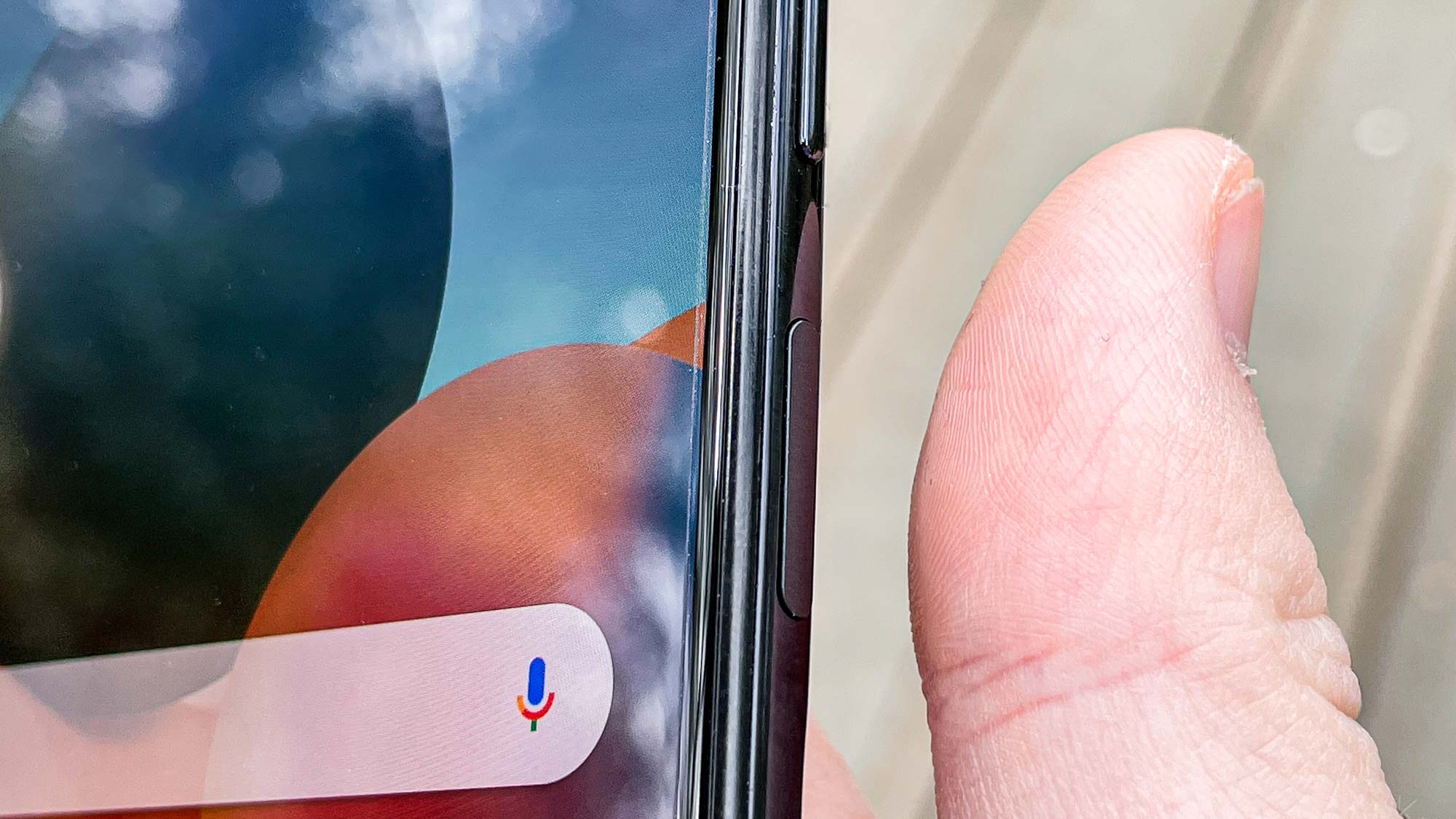
The Redmi Note 10 Pro is IP53 rated for water/dust resistance. In real terms, that means dust may enter the phone but won't interfere with its operation. The phone can withstand a spray of water, but don’t drop it into a sink or pool.

Redmi Note 10 Pro review: Display
With a 6.67-inch display, the Redmi Note 10 Pro delivers a lot of screen for your money. That panel also has a 120Hz maximum refresh rate, the same rate you’ll see in much more expensive flagship phones, and an acceptable FHD resolution. Put together, these display features almost justify the cost of the phone on their own.
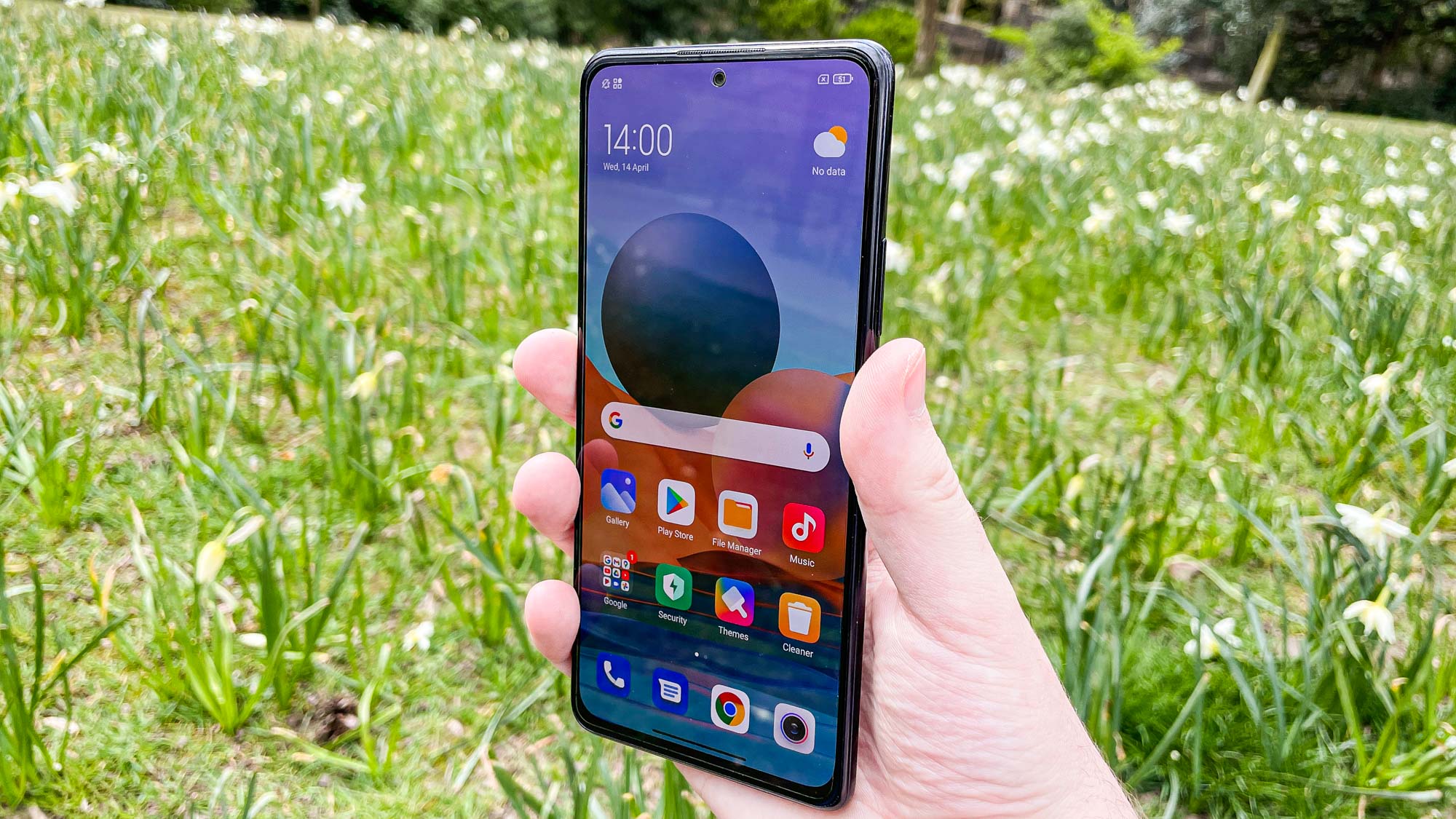
One word about the Note 10 Pro’s refresh rate: it’s static, with options for 60Hz and 120Hz only. While a variable rate like the kind found on the Samsung Galaxy S21 or OnePlus 9 Pro would have been nice, that’s too big an ask for a phone this inexpensive.
Watching the new trailer for Fast & Furious 9, the unbelievable action that defines the series seemed right at home on the Note 10 Pro’s screen, with the explosions and shiny, brightly colored cars all looking particularly exciting on the large display. That said, the screen’s not the brightest, even though it’s rated for 1,200 nits by Redmi itself, which made it hard to watch any videos in direct sunlight.
Redmi Note 10 Pro review: Cameras
Flip over the Redmi Note 10 Pro, and you’ll see four cameras, the highlight being the 108MP main camera, which is the same resolution found on the $1,200 Samsung Galaxy S21 Ultra. That lens is joined by an 8MP ultrawide angle camera, a 5MP telemacro lens and a 2MP depth sensor. There’s also one camera up front, a 16MP selfie cam located within a punch-hole cutout.
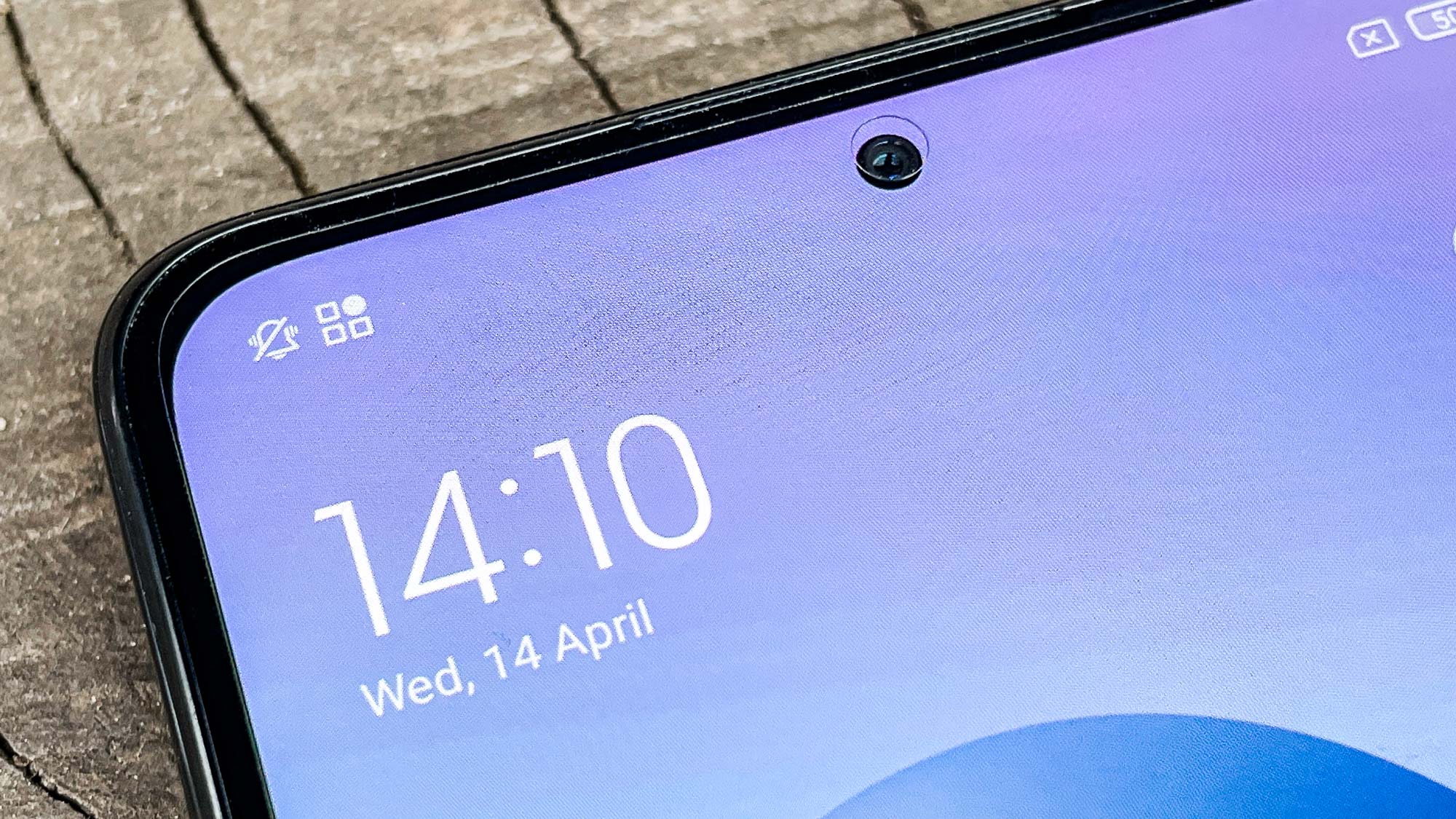
To assess the abilities of these cameras, I compared the Redmi Note 10 Pro’s shots to the Motorola Moto g10. Motorola’s budget model also has five total cameras (48MP main, 8MP ultrawide, 2MP macro, 2MP depth and 8MP selfie), which all serve the same purpose as those on the Note 10 Pro, but for about £120 cheaper.

This first image compares the two phones’ main sensors with a view over the Lower Pond at Waterlow Park in North London. The Redmi has an easy victory here by offering a brighter shot than the one captured by the Moto.
I also tried out the phones’ night modes with these sensors with a view of Tufnell Park Underground station. Here it’s a more even comparison, but the Redmi’s image has kept the bloom from the street lamp in better check. That allows you to appreciate the dark sky better, making it my favorite of the two photos.
For a test of the ultrawide sensors on both phones, I stood beneath this tree with white blossoms for my shots. We see the same difference between the two images that we did with the main cameras; the Moto g10 providing an acceptable shot, but the Redmi offering a more attractive, brighter one.
This macro camera face-off is an easy win for the Redmi. It uses the same 5MP telemacro camera that the Xiaomi Mi 11 does, a sensor that got me to praise Xiaomi for doing macro shots right. The built-in magnification lets Redmi’s camera get a much clearer shot of this key, while the Moto’s struggles to deliver a similar amount of detail because of its smaller 2MP sensor.
The depth sensor on both phones is used to add portrait effects to shots such as this one of me standing in my backyard. With both phones set to their highest bokeh setting, the Redmi and Moto deliver good blurring, except the Note 10 Pro also offers nicer colors and some attractive light spots.
Our final shot compares two selfies in front of a tree back at Waterlow Park. This is too close to call since the Moto’s warmer color temperature makes for an inviting image in the same way that the extra detail of the Redmi’s higher resolution shot does.
These comparisons show how spending just £120 more on your phone can result in much better photography. The Redmi likely wouldn’t stand up to a flagship-level phone in a face-off like this, but it’s again shown just how much quality hardware it offers for the asking price.
Redmi Note 10 Pro review: Performance
The Note 10 Pro contains a Snapdragon 732G chipset, and 6GB or 8GB RAM. My review unit had 6GB RAM, so it won’t have the best possible performance that the Note 10 Pro line can offer.
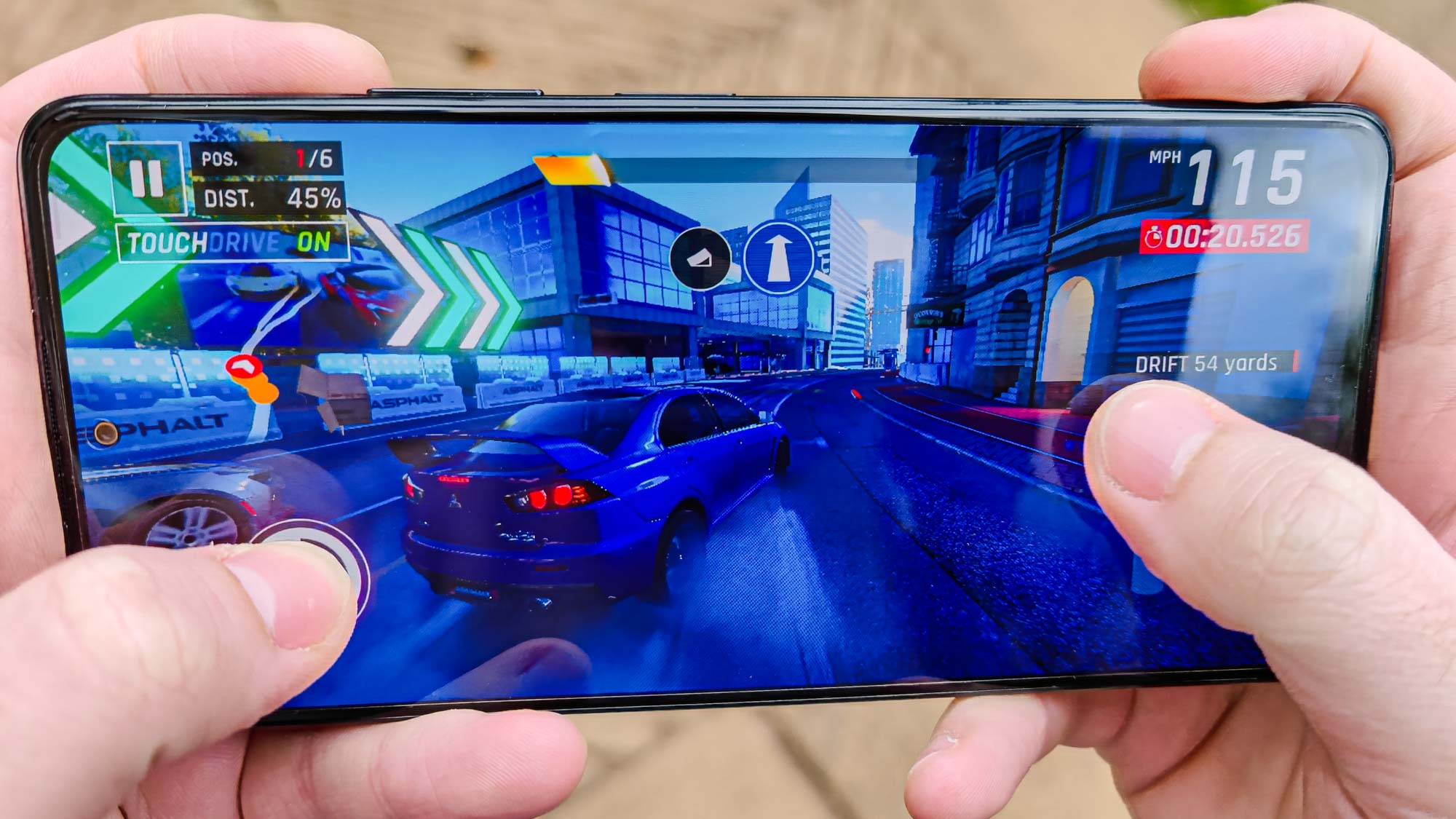
Results from the Geekbench 5 benchmarking app included a single-core average of 421 points and a multicore average of 1,521 for the Redmi Note 10 Pro. That beats the Moto g10’s single-core and multi-core scores of 247 and 1,330, respectively. It doesn’t quite meet the Google Pixel 4a’s 551 and 1,647 results.
Running the 3DMark Wild Life graphics benchmark app, the Redmi achieved a score of 1,112 points with a 6.7fps average frame rate. That’s far better than the Moto g10 (250 1.5fps), but these still aren’t particularly mighty results.
These scores made sense once I booted up Asphalt 9: Legends. There was little anti-aliasing around the edge of the cars, making them look weirdly blocky. I also noticed the background suddenly popping in at some points, a sure sign of a chipset that’s struggling to keep up. The only redeeming features were the frame rate, which thanks to the 120Hz display was smooth and reliable, and the powerful sound from the phone’s stereo speakers.
Redmi Note 10 Pro review: Battery and charging
There’s a huge 5,020 mAh battery in the Note 10 Pro, particularly for a phone of this price. Running down the battery using a particularly long playlist of YouTube videos played over WiFi, it took just over eight hours to get the phone from 45% full to empty. Assuming it drains at a consistent rate when full, that makes for around 18 hours total of video playback, which should translate for plenty of juice for your everyday tasks.

To charge the Note 10 Pro, Redmi bundles in a 33W fast charger in the box. This powers the phone from empty to 27% in 15 minutes, to 56% in 30 minutes and to 100% in 65 minutes. It’s faster than a lot of phones, both around its price point and beyond. The comparably cheap Motorola Moto G Power (2021) fills its 5,000 mAh battery to 22% in half an hour, using a 10W charger. Meanwhile the gold standard for cheap phones, the Google Pixel 4a, makes it to 50% in 30 minutes with an 18W charger and a considerably smaller 3,140 mAh battery.
Redmi Note 10 Pro review: Software
Since the Redmi brand is part of Xiaomi, the Note 10 Pro gets to use MIUI 12, the company’s spin on Android 11. It’s attractive enough to use and is relatively light on bloatware, but lacks a few special features.
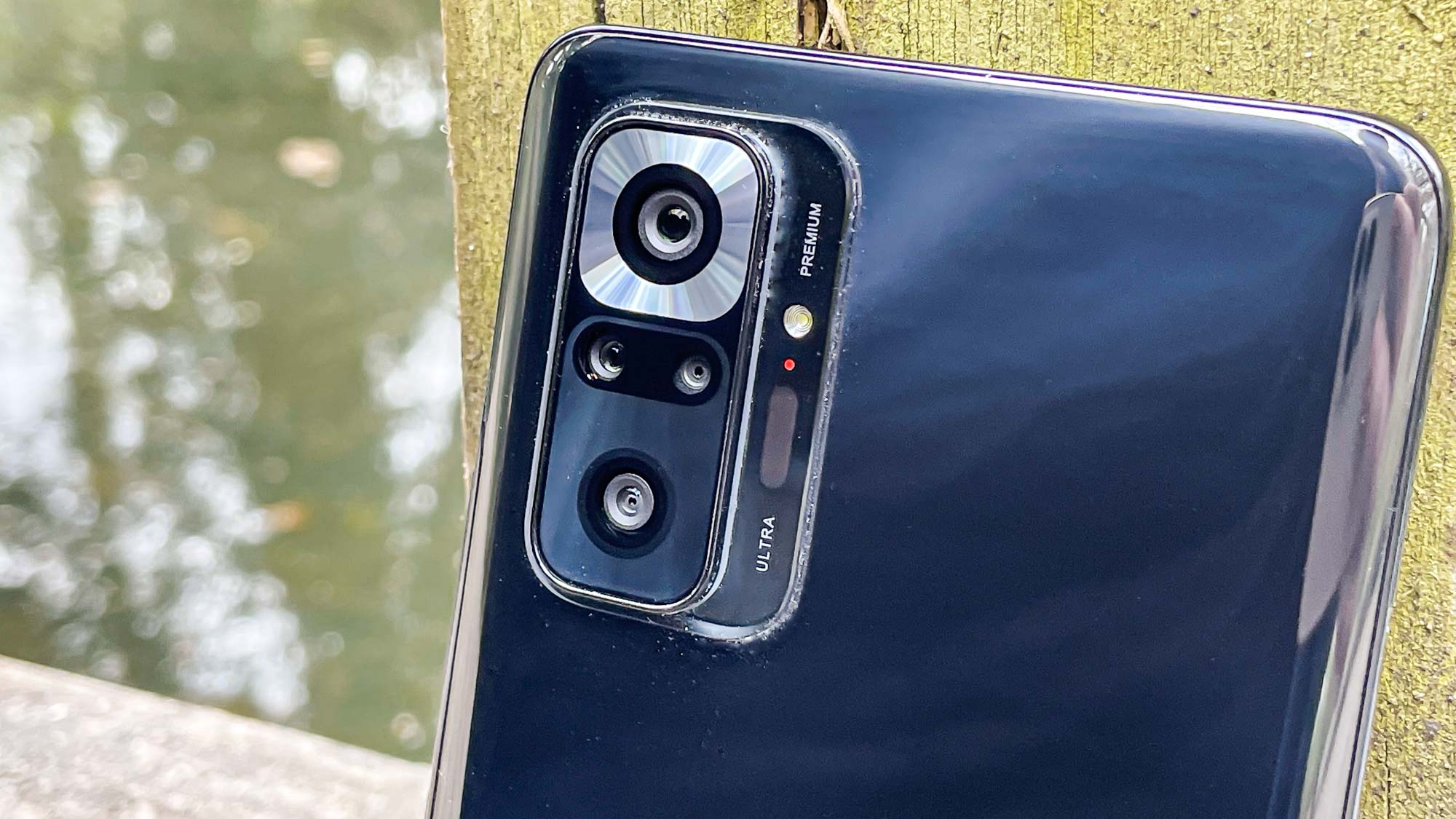
For example, the Mi 11 was capable of opening apps in floating windows on top of another app, a handy feature that the Note 10 Pro can’t manage. The new phone also lacks the split notification shade that shows only your notifications or quick settings depending on which side of the display you swipe down on. Perhaps this is something Xiaomi will eventually roll out to Redmi devices, but it seems unfair to have software features like these but withhold them from users with cheaper handsets.
You still have a few toys to play with though. Redmi offers a customizable always-on display and the choice of using an app drawer or home screens only to store all your apps. They’re welcome but are so common on other Android phones that they don’t curry the Redmi any extra favor.
Redmi Note 10 Pro review: Verdict
Redmi has produced the best kind of cheap phones with the Note 10 Pro — the kind that makes you question why so many people spend $1,000 or more for flagship phones when you can have so much of what you want for far less money.
The Note 10 Pro ticks almost every box when it comes to desirable hardware, but doesn’t pack enough processing power to be a fully formed flagship killer. It makes an excellent choice for cash-strapped users who primarily use their phones for photos, thanks to its effective assortment of cameras, or streaming, because of the large 120Hz display.
You can get better all-rounders in the budget market, such as Google’s reliable Pixel 4a, for not much more money, and of course, there’s no easy way to overcome the fact Redmi phones are not sold in the U.S. But if the price drops further or Xiaomi is allowed back into American stores, this is a phone you’d be foolish to not check out.

Richard is based in London, covering news, reviews and how-tos for phones, tablets, gaming, and whatever else people need advice on. Following on from his MA in Magazine Journalism at the University of Sheffield, he's also written for WIRED U.K., The Register and Creative Bloq. When not at work, he's likely thinking about how to brew the perfect cup of specialty coffee.
-
SUFTUM Nice review, thanks. Just regarding the split notification shade , this needs to be activated in settings as it is off by default (settings - notifications & control centre - control centre style) Also floating windows are accessed via a button at the top of your recent items pageReply
